Student Teams Update

Despite difficulties this year, the AEM student teams have been doing their best to complete team objectives. Below are some updates on what the teams have specifically been working on and how they're practicing safety.
Rocket Team
Despite being virtual, Rocket Team has been engaged. For full team general meetings, they’ve put a greater focus on by hosting company speakers and conducting student panels to give members more advice on internship and research opportunities.
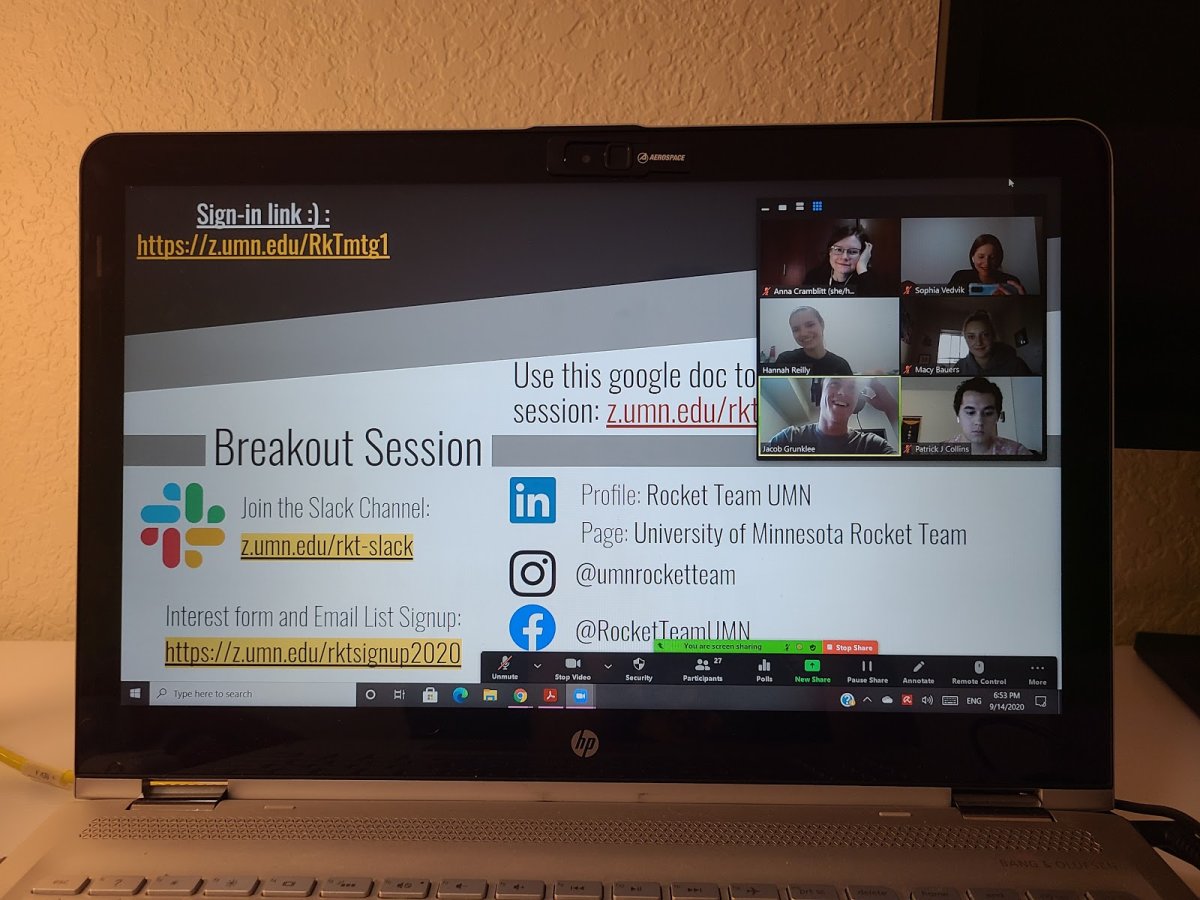
Sophia Vedvik, Rocket Team President, informed us, “We had about 95 students attend our first general meeting and about 65 students attend our last 2 general meetings. As for all of our project teams and sub-teams, they are working on completing as much work as possible virtually, but we've recently had our own "sunrise plan" approved, so we will begin doing a few in-person tasks soon.”
As for specific things sub-teams/projects are up to:
- Recovery is performing research and calculations on a number of different parachute designs in order to determine the dimensions of the new main chute for the SA Cup rocket.
- Avionics is hard at work on the components of the Universal Flight Computer and are hoping to start physical assembly soon.
- Simulations and Structures are trying to set up a CFD software training session and workshop with a mentor from Northrop Grumman.
- Payload has finalized the deployment timing for their module, and is now working on the design for the UAV itself.
- The Midwest High-Power Rocketry Competition has been put on hold for the semester. The subteam that usually participates in this competition has instead opted to split themselves into two smaller teams and both work towards designing a rocket that can break the current altitude record for a rocket flying on a G-motor. These groups are now working on PDR presentations for record-breaking rockets.
- Grand Opening Project to Help Educate Rocketeers (GOPHER) program was created a few years back to help introduce \new members to the basics of rocketry. During September and October this year, members have attended many virtual tutorial sessions for things such as Python and Solidworks, and were able to get a holistic view of high power rocketry. Participants are now starting the design process of their own rockets by creating a rocket nose cone and modeling them in OpenRocket.
- The High Altitude shot project is in the research and design phase of building their rocket, named "Kuiper". They are underway and moving forward with plans for new student-constructed propulsion and recovery systems.
- The Propulsion subteam is assisting the High Altitude team with motor construction and they are researching new grain construction methods for the SA Cup rocket.
- The GNC team is having members complete a few Matlab "assignments" which will make them more comfortable with the main software. The annual Bayer Alka Seltzer Challenge was cancelled for this year
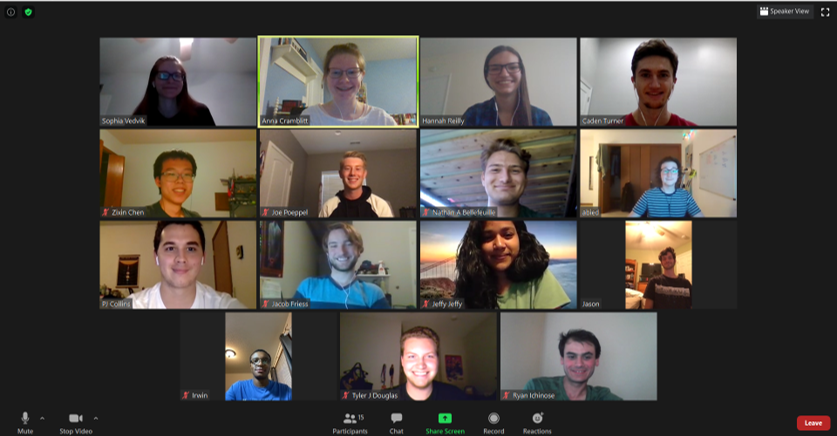
Design, Build, Fly
The 2021 AIAA Design, Build, Fly competition is to deploy and retrieve a sensor via tow cable during flight. This year, the team is composed of six members and is currently in the design phase, brainstorming ideas on how the deployment and retraction mechanism will work. The sensor is a cylinder with a battery inside that controls a sequence of blinking LEDs that can be seen from the ground. The team recently completed their project proposal and will find out in November if they made it into the competition, which will take place in Arizona in April.
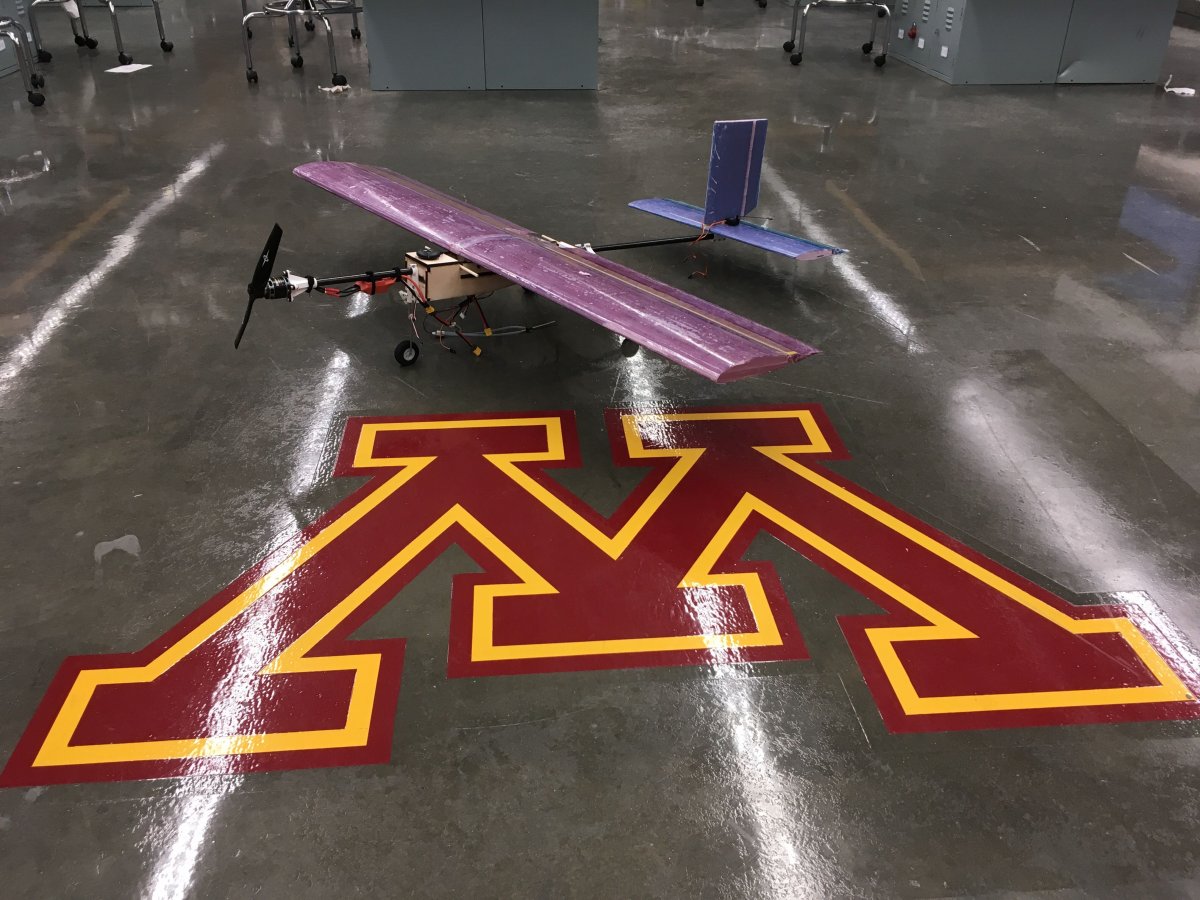
According to team lead, Timothy Dorn, the team is set to start flight testing in a few weeks with a testbed aircraft that they built last year. The goal is to maximize the weight that the aircraft can carry and the speed that it can go. The goal of flight tests will be to confirm whether their theoretical calculations are valid. The competition includes a cargo-carrying requirement which will require the team to include dummy sensors. Full competition rules are located on the AIAA website.
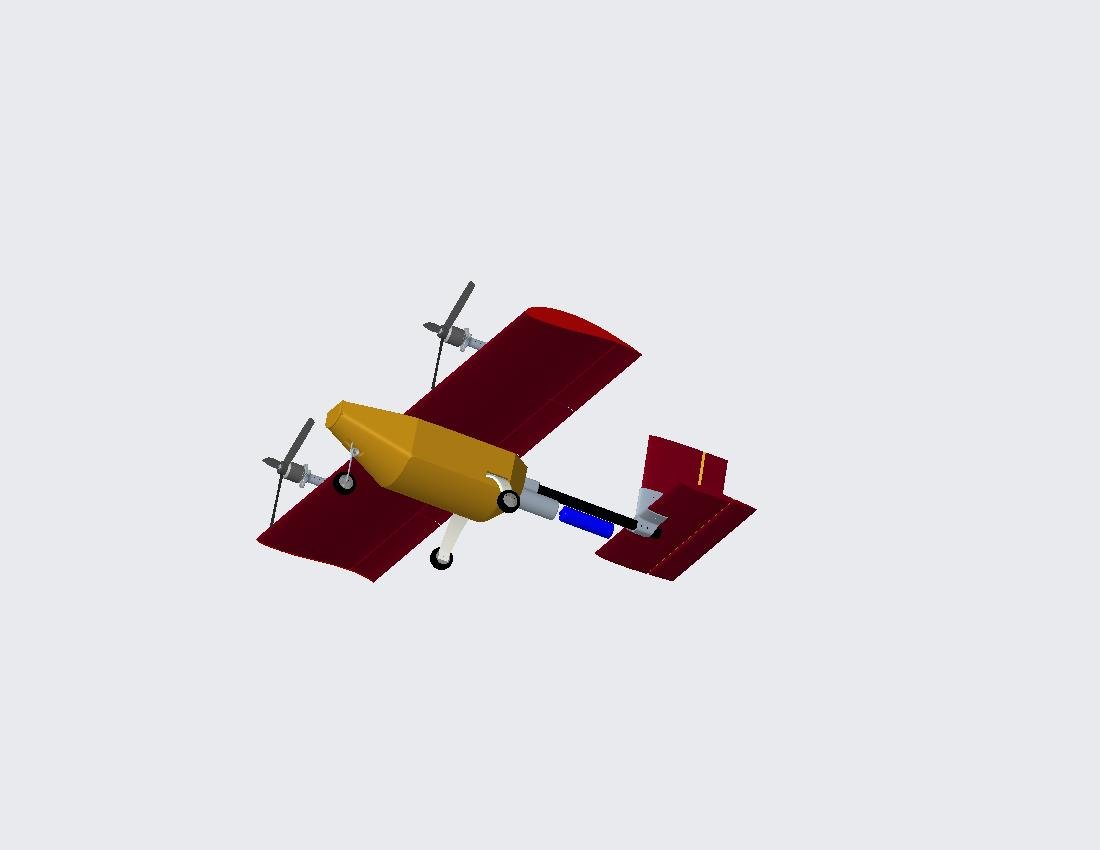
Alphadrone
The Alphadrone Team has been practicing for the upcoming 2021 Collegiate Drone Racing Championships, (tentatively) in April. Their meetings take place at a new STEM store, called RdyTechGo, in the Mall of America, which has agreed to block out Friday nights, allowing them to practice as a team, while also remaining socially distant and observing other safety precautions.. The team is expecting to switch between this in-person method of racing and simulator racing once they know more about the format of the championship races. As for pilots, they have five members. They are a relatively new team on the AIAA subteams and have found recruitment to be a challenge this year. Team lead, Sam Westlake, said “We are hoping that as more University operations come online, we will be able to grow our ranks. As of now, we have members from the Freshman, Sophomore and Junior levels of undergraduate study.”
Alphadrone's primary focus is to train and educate pilots in the upcoming sport of drone racing. Drone racing is a unique sport where pilots wear special headsets that connect to the drones, allowing the pilots to fly as if they were inside the drone. Pilots race through technical, 3-dimensional tracks, going through gates, tunnels and weaving around flags. Some racing drones go as fast as 100mph on the open straights of a track. Although this event typically is hosted, in-person, by the University of North Dakota, there are talks to have a virtual racing event in 2021.
Typically, team practices begin with a course walk-through. This occurs so that all team members understand the proper gate order to fly through. Then, the team will run 3-6 practice flights before racing in a best-of-seven format, where all pilots race seven heats and the one with the highest score (points are allocated based on finish order) at the end is the winner. “We have found these practice races to be accurate representations of real competitions and this has also been a good way to make practice enjoyable, as it gives the whole practice a sense of direction.”
For indoor practice, the team uses prebuilt kits from “New Bee Drone” due to the fact they are easy to set up and are safe to fly around people, as they have propeller guards. For outdoor racing, the team builds their own aircraft though they are waiting to hear from UND on the status of the in-person race as that will affect whether or not they need to assemble a fleet of backup drones to prepare for the race.
CanSat
This year's competition includes constructing a mock maple seed with different sensors on it to measure temperature, pressure, rotation rate, etc. and must fall to the ground at no greater than 20 m/s. These maple seed wings must have radio communication with the canister in which they are held during the duration of the rocket launch. At apogee, one wing is to be released, followed by the other about 100 meters later. The canister must have radio communication with a ground station and give information of the flight.
The team is currently in the the researching and design phase and has started testing maple seed designs.
Due to safety precautions, the team meets on Zoom to delegate tasks and maintain communication and updates with each other Team lead, Joel Douglas, said, “It's hard to keep on track, but we are doing our best to plan things out and stay on a relatively tight schedule. The competition is in mid-June, so we have the whole academic year to design, build, and test our ideas. Collaborating with teammates virtually will be one of the biggest challenges, however often communication will help with this immensely.”
SmallSat
SmallSat is currently working in multiple sub-teams with the goal of putting small satellites, or cube satellites, into space. Each satellite has a different goal and purpose, but the team is looking at atmospheric breakdown of structures, mapping pulsars in the milky way, and making observations of the sun’s magnetic effects.
SmallSat is currently in early stages to test software and hardware for their second satellite. The team has finished their first satelline, SOCRATES, and has moved on to IMPRESS, EXACT, and HyCube. The teams are composed of14 student project leaders across under-graduate and graduate levels, and over 50 student researchers in the project working on software development and hardware construction. The team is moving into testing between subsystems and developing interfaces. While still writing their Interface Control Documents, the interface testing will be possible. Several sub-teams are prepared to build their hardware upon returning to the SmallSat lab. Their current goal is to be able to wire these systems together and spread them out across a table, which has been given the endearing name of FlatSat. Once this goal is achieved, the group can move forward testing software for these systems and will be reviewed in January 2021.
With over 50 members on their team, SmallSat team had to divide into eight sub teams in order to safely work during these times. Team member, Corbin Condon, indicated, “Many people who work in large teams are experiencing a similar problem to the one we faced: it is difficult to communicate on this scale without any face to face contact. To paraphrase our student team leader Meredith Wieber, because we cannot use our physical space….we cannot stop by to ask questions of others.”
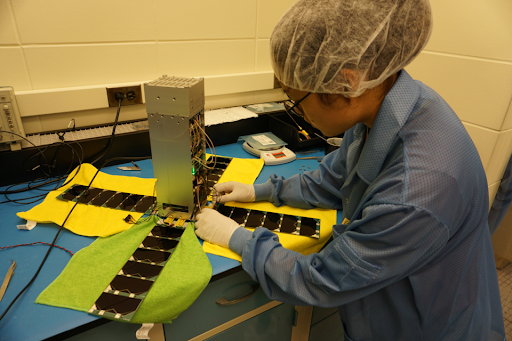
Another challenge they have faced is the loss of ability to use their lab. Some specific hardware testing had to be delayed, but some team members were eventually able to regain access as the university incorporated sunrise plans. But despite the challenges, the team is working hard and remaining optimistic. “As both our Chief engineer, Marie Wulff, and Meredith would comment, there has been one benefit to moving online: a shift in focus. By having the ability to continue testing removed our team has been able to refocus, and reconsider some of our plans. As such, we have been able to focus on improving our quality of documentation as well as constructing plans for our future.”
